Best open-back headphones 2025: top choices from Beyerdynamic, Sennheiser, Philips and more
Experience natural, authentic sound both at home and in the studio with our pick of the best open-back headphones
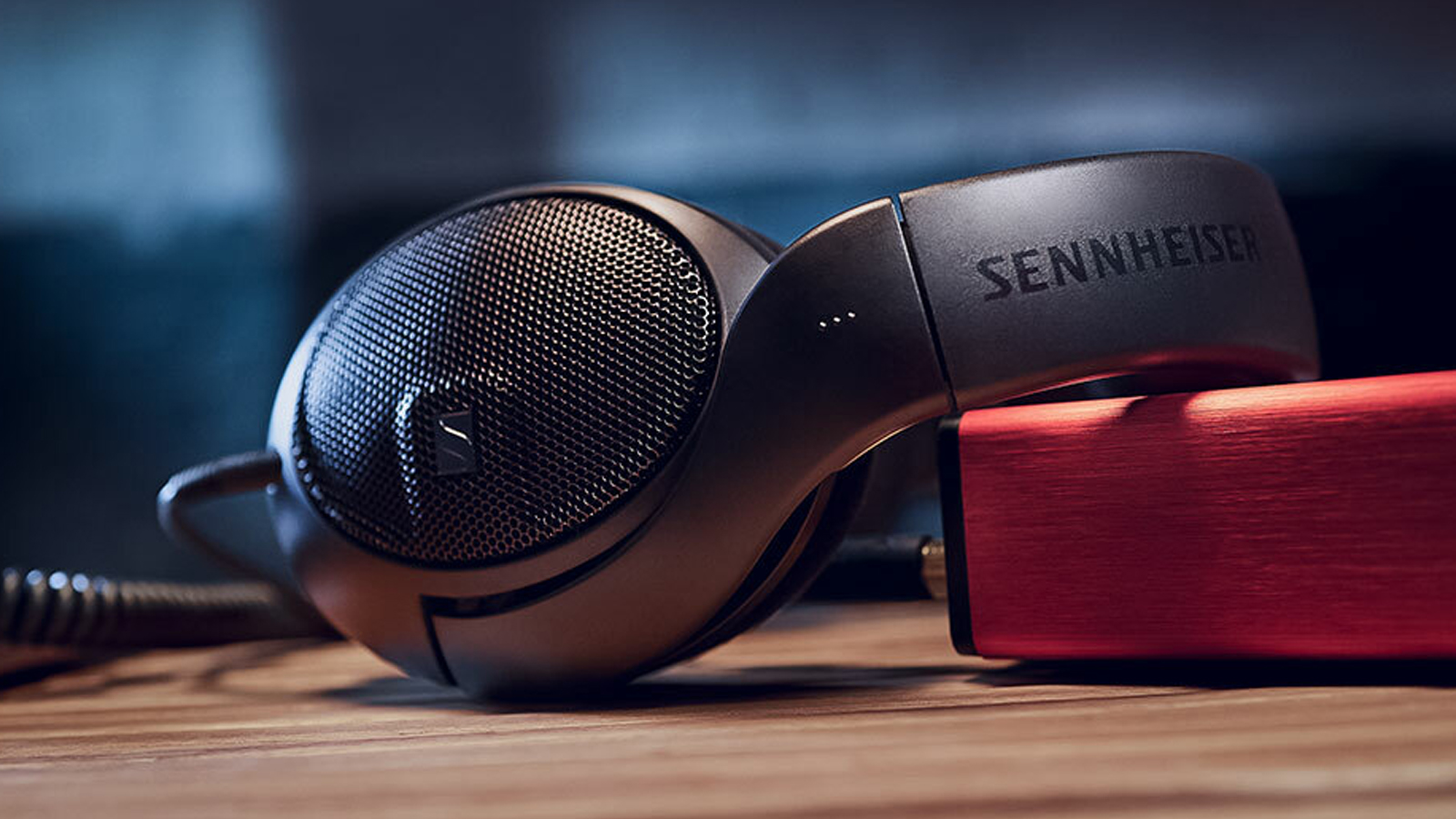
If you’re looking for advice on the best open-back headphones available today, then you’ve come to the right place. In this guide, we list our recommendations for a wide range of budgets, to help you make a sensible buying choice. But before we get to those, let’s clarify what open-back headphones are and why you might want to get some.
Over-ear headphones come in two main flavours – closed-back and open-back. What’s the difference? Closed-back headphones feature ear cups that are completely enclosed, meaning that when you put them on, they fully cover your ear with a hard outer shell. Although great at blocking out unwanted external sound, they can be prone to an over-pronounced bass response due to air pressure building up within the casing. They can also make it seem as though the music you’re listening to is coming from inside your head.
Open-back cans feature ventilated ear cups that allow air to pass through the outer shell via some kind of mesh. Many claim that this breathability produces a more natural, open sound, with better stereo reproduction, making it feel more like you’re in the same room as the musicians you’re listening to.
The major downside with open-back headphones is that, as well as air, sound can leak in and out. For this reason, they’re not the best choice for tracking microphones in the studio, as the sound of your backing tracks can bleed through and be picked up by the mics. Similarly, open-back cans aren’t so great at blocking out ambient sound when listening in noisy environments or keeping your song choices private when playing music on public transport.
So, what are they good for? The best open-back headphones make listening to pre-recorded music at home an immensely pleasurable experience, and they’re also brilliant for mixing and mastering in the studio. Does that sound like what you’re after? Then step this way…
Best open-back headphones: Our top pick
When they were launched towards the end of 2021, the Beyerdynamic DT 900 PRO Xs caused quite a stir, not least because many people imagined them to be a direct replacement for the hugely popular DT 990 PROs. Instead, these premium open-back studio headphones quickly earned their spurs by vastly improving on the older set.
Upgraded with new transducer architecture, an improved fit and finish, plus a singular impedance rating that increases their effectiveness both in everyday use and in the studio, the DT 900 PRO Xs are an excellent set of cans and well-deserving of the top spot on our list.
Best open-back headphones: Product guide
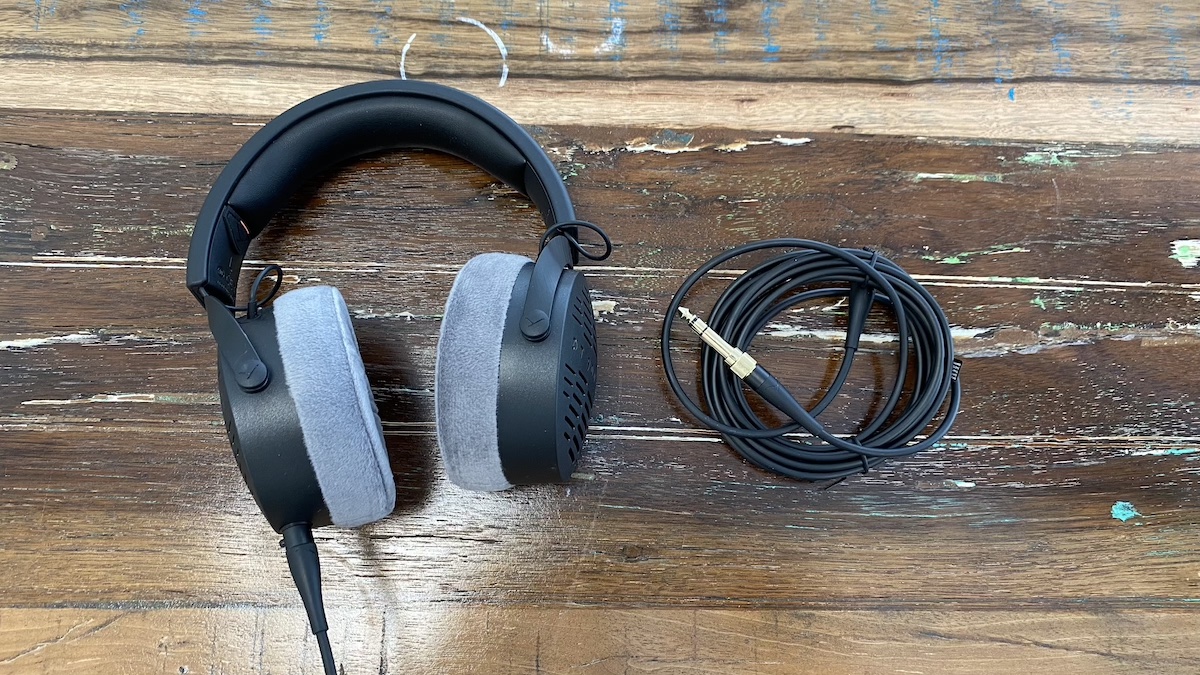
Specifications
Reasons to buy
Reasons to avoid
Beyerdynamic’s new PRO X range of headphones and studio microphones was designed to enhance, rather than replace, the company’s popular PRO line. Accordingly, Beyer is at pains to point out that the DT 900 PRO Xs aren’t simply a more expensive replacement for the DT 990 PROs, but a more advanced set of headphones in their own right.
Aside from the higher price point, the main differences here are a brand-new STELLAR.45 transducer, designed for improved performance, and a radically updated new look – all smooth matt plastic and slightly deeper versions of those famously squishy velour ear pads.
The DT 900 PRO Xs offer 48 ohms of impedance, making them very loud and punchy-sounding when hooked up to a mobile phone or laptop, but still more than capable of delivering the goods when connected to an audio interface or studio headphone amp.
Read the full Beyerdynamic DT 900 PRO X review

Specifications
Reasons to buy
Reasons to avoid
Maintaining Sennheiser’s penchant for large, egg-shaped earcups, these new open-back offerings in the pro studio reference monitor headphone category have impressed critics and punters alike with their lightweight, modern design, neutral and open sound, and ability to deliver mixes that translate well to other playback environments.
This capability is enhanced by the HD 400 Pros’ compatibility with the dearVR MIX virtual monitoring software, which will work in your DAW and in conjunction with your headphones to simulate virtual world-class stereo mix rooms with carefully designed acoustics.
Furthermore, the angled transducer design – a principle borrowed from the flagship HD 800 S cans – allows for unique stereo imaging that’ll faithfully reproduce the spatial sound of your mix.
Read the full Sennheiser HD 400 Pro review

Specifications
Reasons to buy
Reasons to avoid
Firm favourites among, well, almost everybody since 2004, the DT 990 PROs are Beyerdynamic’s open-back equivalent of the incredibly popular DT 770 PRO closed-back studio headphones.
Those iconic squishy, velour ear pads are one of the main reasons for these cans’ enduring popularity, but there’s also no escaping how good the DT 990 PROs sound for a set of studio reference headphones with a relatively flat and neutral response.
The clear, wide and detailed sound of these cans, combined with their almost decadent level of comfort, means that they still more than hold their own against the newer and more expensive PRO X set. So, if your budget won’t stretch to the newer headphones, these remain a safe bet for studio referencing.
Read the full Beyerdynamic DT 990 PRO review

4. Philips Fidelio X3
Our expert review:
Specifications
Reasons to buy
Reasons to avoid
The Philips Fidelio X series dates back years, and now we have the X3s – a set of audiophile open-backs that deliver the goods without commanding a huge outlay of cash.
These headphones have been designed to impress, boasting luxury materials such as Scottish Muirhead leather for the headband, acoustically transparent speaker fabric for the outside of the ear cups, and velvet-covered memory foam for the ear pad cushions.
They deliver a great listening experience, too. Featuring extra-large 50mm neodymium drivers, which are tilted at an angle of 15 degrees in harmony with the natural geometry of your ears, they reproduce recorded material with a rich, detailed and open sound that makes these a great choice for listening at home.
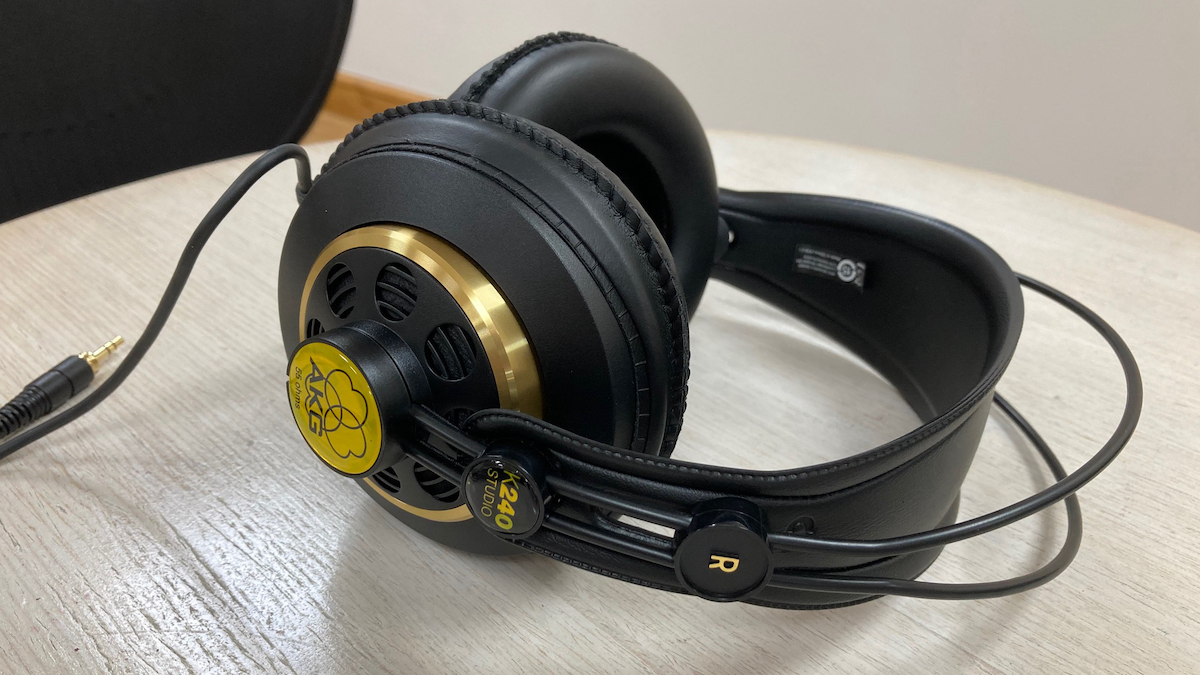
5. AKG K240 Studio
Our expert review:
Specifications
Reasons to buy
Reasons to avoid
The AKG K240 Studios may be getting a bit long in the tooth these days, but their continued status as a premium budget buy is irrefutable. Their decades-long popularity among studio folk is testament to their detailed, accurate sound.
Classified as semi-open-back headphones due to there being only a few small, circular vent holes in each ear cup, AKG’s cans manage to combine the studio practicality of a closed-back headphones design with the natural tendencies of open-back headphones in an impressively priced compromise.
Lightweight, affordable and very comfortable to wear (thanks to AKG’s trademark self-adjusting headband), the K240 Studios are still a strong contender in the budget open-back stakes.
Read the full AKG K240 Studio review
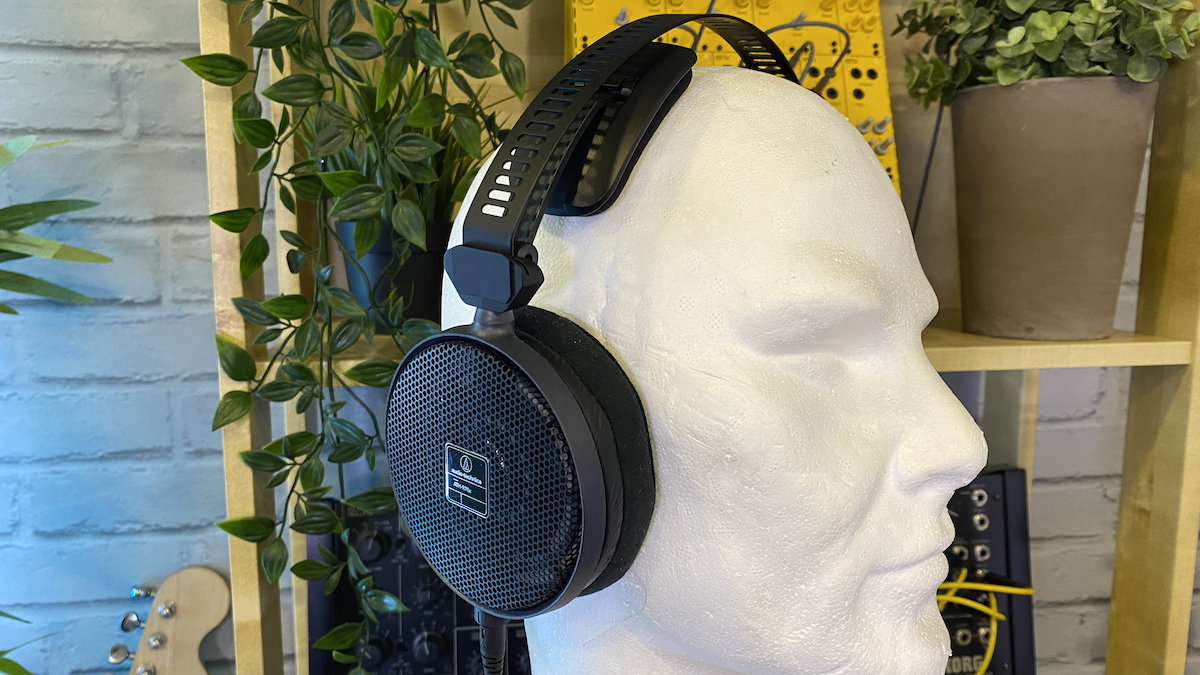
Specifications
Reasons to buy
Reasons to avoid
Featuring specially designed drivers and acoustically transparent aluminium honeycomb mesh housings, the ATH-R70xs are the flagship model in Audio-Technica’s Professional Studio headphones range.
Delivering an accurate and natural open-back sound, they also incorporate a new, improved version of Audio-Technica’s unique ‘3D wing’ headband design, which helps provide additional comfort during the extended use often demanded in professional settings.
Since they’re designed specifically for pros, though, these have a whopping impedance rating of 470 ohms, meaning you’ll need a separate headphone amp to get the best out of them. So, if you’re after something to use with your phone, you might want to look elsewhere – perhaps at the less-expensive, lower-impedance ATH-AD500Xs.
Read the full Audio-Technica ATH-R70x review

7. Beyerdynamic DT 1990 PRO
Our expert review:
Specifications
Reasons to buy
Reasons to avoid
Taking things up a notch from the DT 990 PROs, the DT 1990 PROs are Beyerdynamic’s premium studio open-back headphones, delivering deep, powerful lows, neutral mids and brilliance in the high end.
These cans also get a big tick in the box for comfort, with plush, memory-foam ear pads and a leather headband making for a luxurious listening experience. The build quality is bulletproof, too, meaning that your investment should safely reap rewards for years to come.
Being pro-level, these cans come with an impedance rating of 250 ohms, so you’ll almost certainly require a headphone amp to make them shine. When we hooked up to one, the DT 1990 PROs placed us in the same room as the band like no other headphones we’d tried.

8. HIFIMAN HE400i
Our expert review:
Specifications
Reasons to buy
Reasons to avoid
Well-known among audiophile listeners, HIFIMAN offers a range of headphones starting at around $/£100 and going right up to the four-figure mark.
The mid-priced HE400is make good use of the company’s preferred planar magnetic driver technology. This sees the transducer moving in a different way to regular electrostatic coils, resulting in larger drivers with a great transient response and impressive spatial imaging.
A relatively low 32-ohm impedance rating makes these headphones a great bet for listening to music on your smartphone, laptop or tablet. Although they’re getting quite hard to find outside of the US and Canada, if you can get your hands on a pair, you’ll find that they’re well worth the investment.
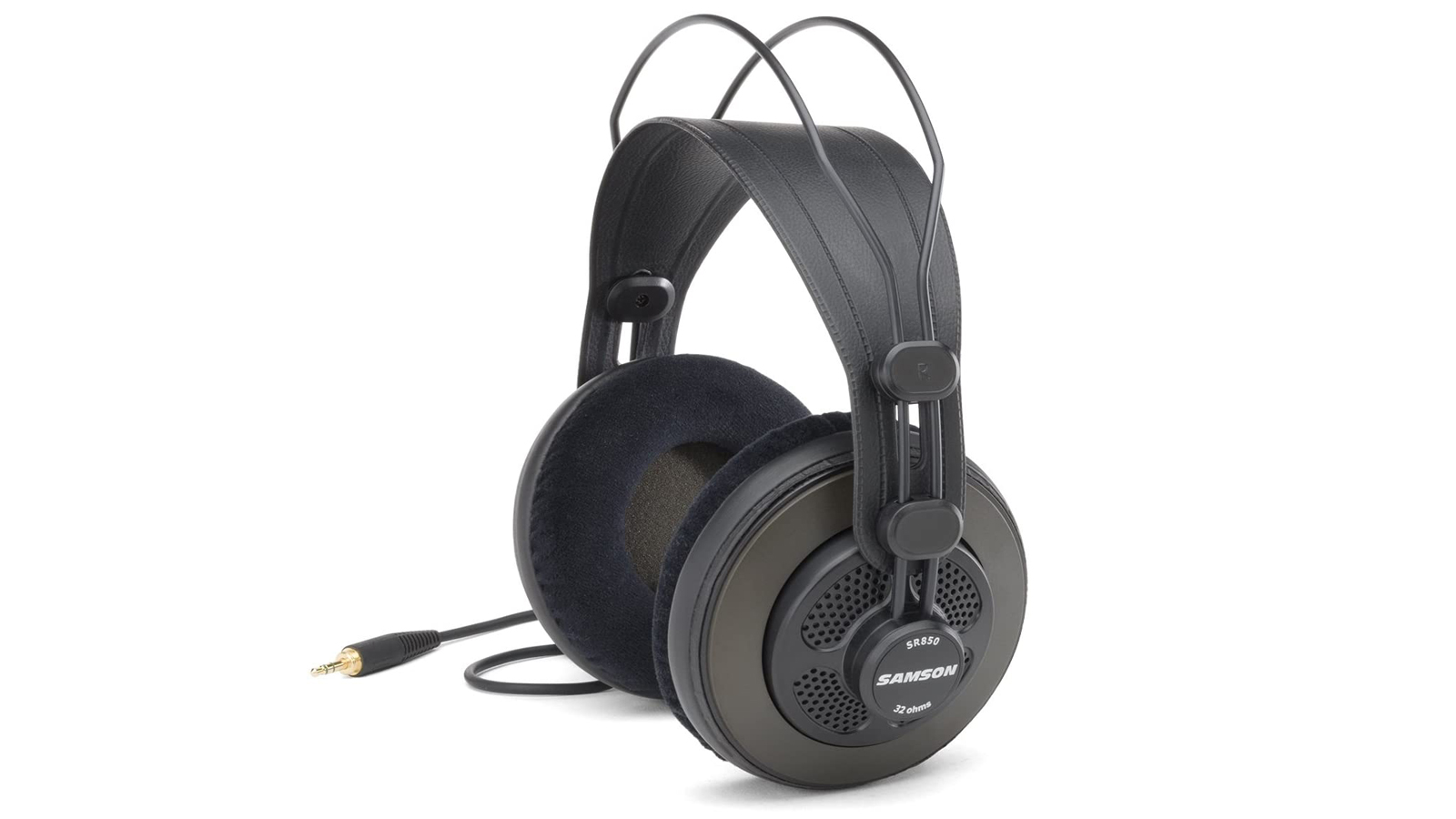
9. Samson SR850
Our expert review:
Specifications
Reasons to buy
Reasons to avoid
They might be super-cheap, but Samson’s SR850s punch well above their weight in terms of sound quality, with a response that’s on a par with cans costing up to four times as much.
Similar in design to the more expensive AKG K240 Studios, the SR850s fall into the ‘semi-open-back’ category, which means they provide slightly better isolation than most open-backs, while still delivering a natural, open sound.
As you’d expect for the price, the materials feel a little on the cheap side compared to the AKGs. But if you can look past that, the expansive listening experience and comparable level of comfort make the SR850s more than worth checking out.

10. Sennheiser HD 800 S
Our expert review:
Specifications
Reasons to buy
Reasons to avoid
Sennheiser makes some seriously impressive headphones, so you’d expect its flagship set to be something special – and the HD 800 Ss are certainly that.
The transducer in these cans measures a whopping 56mm – allegedly the largest ever used in a pair of dynamic headphones – while the unique ear cup design angles the drivers slightly relative to the ear, producing a natural, spatial sound that has to be heard to be believed.
The HD 800 S use the same acoustic absorption technology that was pioneered in the IE 800 S in-ear monitors, to achieve a balanced, natural sound. One caveat, though – with an impedance of 300 ohms, you’ll most likely need to drive these with a headphone amp in order to get the best results. But what results!
Best open-back headphones: Buying advice

What to look for when choosing a pair of open-back headphones
MusicRadar's got your back
Whether you’re in the market for a pair of cans to use while producing your own music in a studio setting, or you’re simply after something to enhance the experience of listening to music at home, there are plenty of things to bear in mind when perusing the potential candidates on your shopping list. After all, the pair you ultimately choose will ideally form a lifelong partnership with your ears to become a tried-and-trusted music referencing tool.
While the market for closed-back studio cans has seen some encroachment by studio monitor speaker manufacturers such as ADAM Audio, KRK and Focal into the market of late, the slightly more audiophile-oriented open-back headphones landscape is still largely dominated by heavyweight brands such as Beyerdynamic, Sennheiser, Audio-Technica and AKG. The reason why so many models from these companies appear on this list is that, by and large, it’s difficult to go wrong with a set of headphones from these guys – they’ve been at it a long time and they really know what they’re doing!
Frequency response
One of the more prominent items on a pair of headphones’ spec sheet is the frequency response. Simply put, frequency response relates to the range of sound frequencies the drivers in the headphones are able to reproduce. In the case of nearly every pair of cans on the market today, and certainly in the case of all the candidates on this list, this falls well outside the extremes of human hearing, which begin at 20Hz and top off at around 20kHz, reducing further as we get older.
Anything outside of this range will be inaudible to us, so as long as the response between these boundaries is well represented across the range, with crisp, clear detail at even volume levels from low to high, the actual frequency response figures themselves are largely irrelevant.
In other words, don’t worry too much about frequency response!
Impedance
A much more important item on the spec sheet from a practical point of view is the impedance value. When figuring out what impedance rating your ideal headphones should have, you need to consider where you’ll be using them and what type of gear you’ll be plugging them into.
Measured in ohms (Ω), impedance is related to the thickness of wire used in the transducers in your headphones’ drivers. Therefore the higher the impedance, the higher the level of signal needed to drive the headphones properly so that they sound at their best.
For this reason, high-impedance headphones tend to work best when hooked up to a decent hi-fi stereo amp or a headphone power amp in a studio environment, while lower-impedance cans are designed to be plugged directly into a single, low-output source, such as a computer headphone jack, a tablet device or a mobile phone.
Most of the headphones on this list are low-mid impedance models, ranging between 32 and 80 ohms, but there are a couple of more audiophile-focused items where the impedance rating extends into three-figure territory. These will definitely need an amp of some kind, as they’ll sound underwhelming if plugged directly into a MacBook Pro’s headphone jack, for example.
Comfort
Anything that sits on your head for an extended period of time needs to be comfortable, and open-back headphones are no exception. Padded ear cups are a must, since not only is all of that padding important from a comfort point of view, stopping the sides of your head from becoming fatigued; having your ears surrounded by luxurious padding makes the listening experience profoundly inclusive.
Due to the venting of the outer ear cup casing, open-back headphones tend to be lighter than their closed-back equivalents, which counts significantly towards the more open, natural feeling you experience when listening to music on them. Some open-back headphone designs can cause issues for those who wear glasses, however, so if this might be a potential issue for you, you may want to road-test a few pairs before committing.
Cable length
The length of the cable attached to your cans can be an important consideration, with different lengths more suitable for different use cases. A really long cable might be great for listening at home, or for gaming or watching TV, but that same cable might be a proper nuisance in the studio, constantly getting tangled up on the arms or feet of your studio swivel chair.
To that end, many headphones are now supplied with two or three detachable cables of varying styles and lengths that can be swapped out to suit the scenario. Coiled cables are generally more versatile for studio use as they’re (literally) more flexible and less prone to tangling than long, straight cables – although their excess weight can be trying at times.
If the idea of untethered listening appeals to you, there’s always the Bluetooth wireless route – several manufacturers now feature open-back Bluetooth models in their ranges. While Bluetooth cans have increased in popularity recently, and are a brilliant bet for listening to pre-recorded material, we’d advise that cables are still a must for studio use, due to latency issues.
How we test studio headphones
As with studio monitors, we test headphones with a variety of reference tunes – mostly very well produced standards, but some of our own trusted mixes as well. We use these to check frequency response and general overall quality in terms of spatial response and playback, and in terms of how good the phones are at delivering a response at low volume levels – the levels you should be mixing at to protect your ears.
We also test how good the isolation is. For mixing you might prefer less intrusion from the outside world so you can focus on the main elements in your music, so isolation is a key factor. The weight and comfort of the phones is also an important consideration, as you'll likely be wearing them for long sessions in the studio (although we obviously recommend taking regular breaks). Most of the time, the lighter the better but how the headphones embrace your head is important. Too loose is obviously not good, but too tight can mean too hot.
Find out more about how we test music gear and services at MusicRadar.
Related buyer's guides
- The best podcast headphones for your rig
- Spend more time in the booth? These are the best DJ headphones
- Best headphones for digital piano: options for every budget
- Best headphones for drummers: sound isolation for the studio and beyond
Want all the hottest music and gear news, reviews, deals, features and more, direct to your inbox? Sign up here.
Dave has been making music with computers since 1988 and his engineering, programming and keyboard-playing has featured on recordings by artists including George Michael, Kylie and Gary Barlow. A music technology writer since 2007, he’s Computer Music’s long-serving songwriting and music theory columnist, iCreate magazine’s resident Logic Pro expert and a regular contributor to MusicRadar and Attack Magazine. He also lectures on synthesis at Leeds Conservatoire of Music and is the author of Avid Pro Tools Basics.
